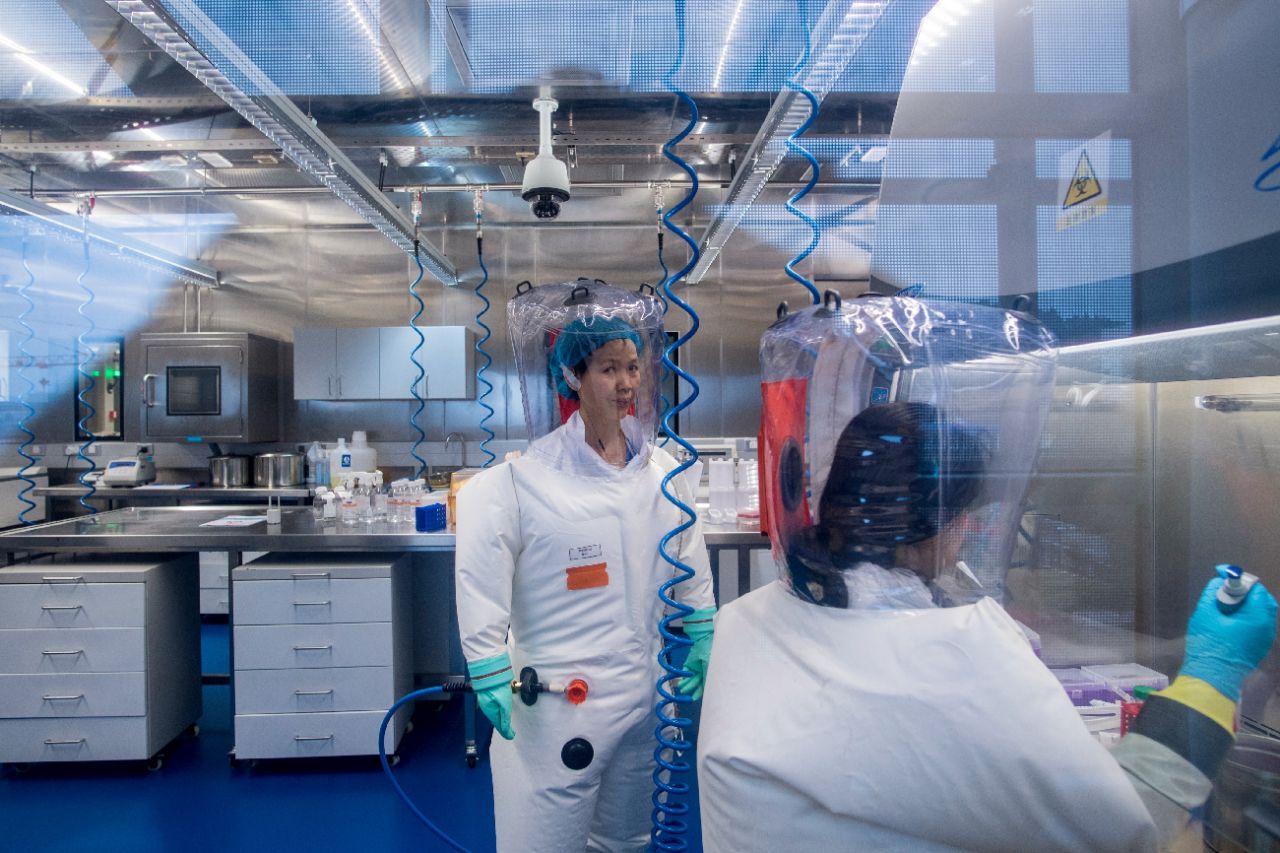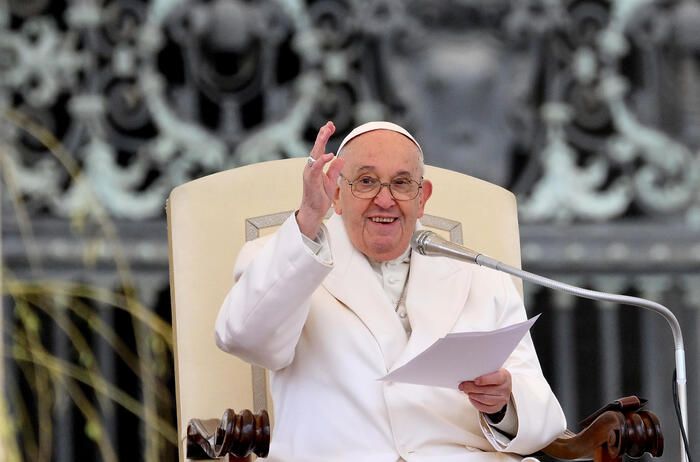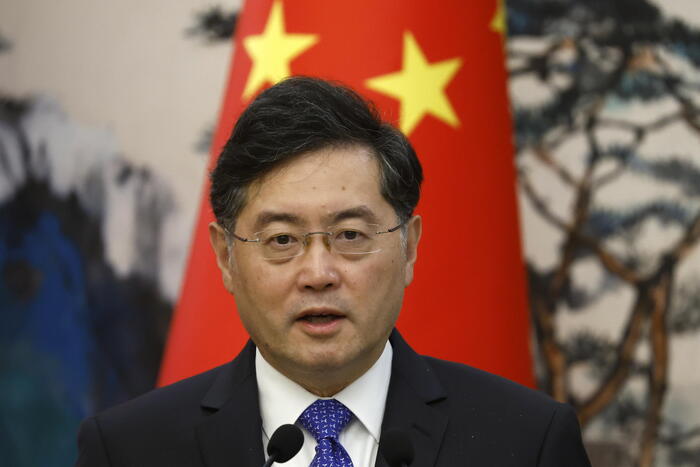The world has been dealing with Covid-19 for a year and a half.
And yet, we still do not know the origin of the pandemic.
For many specialists, going back to its genesis is essential to defeat the virus, but also to protect oneself in the future from the onset of a new disease capable of spreading on a planetary scale.
For months, different hypotheses have been on the table.
The natural transmission of the virus from a host animal that scientists are struggling to identify.
And then that of a laboratory accident, which researchers urge not to neglect.
Irrevocably, all eyes then turn to the Institute of Virology in Wuhan, China.
To read also From the French origins of the P4 laboratory in Wuhan
The Chinese authorities, since the start of the health crisis, have always defended themselves from being responsible for the epidemic.
A column published this Friday in the journal Science and signed by about twenty scientists, calls for especially not to neglect this theory of a leak from a laboratory.
Especially since the existence of three theses carried out in China in 2014, 2017 and 2019, revealed by an anonymous Twitter account and relayed by our colleagues from the World, gives a little more body to this track.
These writings tend to show that China has not said everything about the work carried out in its laboratory.
Worse, she could quickly be accused of lying.
A forum of scientists calling for an "impartial" speech
In its publication, the twenty scientists also said that the investigation conducted in China by the WHO did not thoroughly explore the hypothesis of a laboratory leak. “Only 4 of the 313 pages of the report and its appendices dealt with the possibility of a laboratory accident,” they regret. However, the Director-General of the WHO, Tedros Ghebreyesus, had, when submitting the results of the investigation into the origin of the coronavirus on March 30, admitted that he "did not think that this assessment had been sufficiently thorough. More data and studies will be needed to reach more solid conclusions ”about a hypothetical leak. When researchers' call for transparency ends with a desire for “impartial scientific discourse”.
Among these eminent scientists is Ralph Baric of the University of North Carolina.
The presence of this specialist must resonate as far as China, since he has already been able to work alongside scientists from the Wuhan laboratory.
“We now know that Baric, who is at Chapel Hill University in North Carolina, and Shi Zhengli, the patron of the Wuhan institute, worked together.
By signing this platform, he comes out of the woods and his signature is major.
He acknowledges the fact that the Chinese may have done something stupid, ”considers Hervé Fleury, virologist, professor emeritus at the CNRS and at the University of Bordeaux.
The intriguing RaTG13 virus
One of the main lessons of the revelations published today concerns the RaTG13 virus. For those new to virology, this is the name of the virus identified until then as being the closest genetically to SARS-CoV-2. Its genome had been completely peeled by researchers from the Wuhan Institute of Virology in the journal Nature in February 2020. Very quickly, an Italian microbiologist, Rossana Segreto, who works at the Institute in Innsbruck in Austria, had been reported on the existence of an almost identical virus, published in 2016 and responding to the name “RaBtCoV / 4991”. In July 2020, Shi Zhengli, the boss of the Wuhan institute, claimed that these two names actually corresponded to the same virus, which would have simply changed its name.
The problem is that the data entered in one of the theses revealed this Friday, and published in 2019, invalidate this assertion.
The genetic sequences between RaBtCoV / 4991 and RaTG13 diverge by 1% to 1.5%, in particular at the level of the Spike protein, which allows the virus to penetrate its host.
"This corresponds to between 10 and 15 mutations, in an area playing a key role for the infectivity of the virus", explains Professor Etienne Decroly to Le Monde.
This genetic difference is unexplained to this day.
A coronavirus taken in secret
The RaTG13 virus was collected in 2013 in a Mojiang mine, where three miners died of pneumonia whose symptoms may be reminiscent of SARS or Covid.
Six workers had been infected in total.
The area is now completely closed to access by the Chinese authorities.
The Wuhan institute has so far claimed to have kept 13 blood samples from four of the six minors who fell ill.
No apparent sign of infection with a coronavirus, they added, evoking the thesis of a pathogenic fungus.
In fact, according to the 2014 study, 30 blood samples were collected.
Read alsoSecret searches, hidden patients: new accusations by the United States against the Wuhan lab
Last November, the Wuhan institute claimed to have collected eight other coronaviruses in this mine.
Lie, again, according to the documents made available to the general public: at least one other coronavirus has been taken.
Until then, it had never been the subject of a publication.
What is this coronavirus?
Why have its existence, its collection, and its analysis never been made public?
Here again, the questions remain unanswered.
Work never made public
The questions do not stop there. “As early as 2016, Baric wrote in an article published in the journal PNAS that work was underway on recombinant viruses and that they represented a great danger,” explains Hervé Fleury. These writings focused on the WIV1 virus, which the Wuhan researchers were also working on. “And for good reason, the thesis carried out in 2017 sought to assess the potential contagiousness of bat coronaviruses on humans. This work was based precisely on this WIV1 virus. Details of the results were never released in full.
"We now know that genetic recombination experiments were carried out in Wuhan and North Carolina," continues the virologist.
The idea was to adapt this virus to humans to better understand transmissibility.
This is called the
gain of function
.
We can now say that the Chinese held viruses in their refrigerators capable of infecting humans and generating an epidemic.
"
What it can change
According to Antoine Bondaz, researcher at the Foundation for Strategic Research (FRS), specialist in international relations in Asia, these revelations "may allow the international community to put the pressure on China". For this connoisseur of the Middle Empire, on a political level, their impact could be "greater than anything that has been said or done until today." The fact of having concealed useful information can rekindle global doubt ”.
For the moment, no echo of these hidden works or of the scientific platform has been published in the Chinese media. On the side of the authorities, it is radio silence. For there to be a reaction, these media and scientific movements will have to become political. “If important countries take hold of the matter in the days to come, China will have to respond. She may say that these documents are false, but it is risky. She may try to discredit them, ”thinks Antoine Bondaz.
In the meantime, the WHO is also in the spotlight. If she has not reacted for the moment, “these news will push her to continue to seek the origin of the pandemic. It is his responsibility, ”anticipates the FRS specialist. He recalls that the Chinese authorities assume that if we cannot demonstrate the fault of the laboratory, it is because this hypothesis does not hold. But scientists reason otherwise: we must prove that this is not possible.
However, the virologist Hervé Fleury is not very optimistic. “The Chinese are the masters of the game. They are at home and probably know what happened. It will undoubtedly be extremely difficult to definitively prove the hypothesis of the leak from the Wuhan laboratory. It remains to be seen whether the passage of time will work in China's favor. And if Europe, the United States, and all the countries that call for real investigations, when they are done with the epidemic, will come back stronger to hold China to account and identify the origin of this human, economic and societal drama. Finally.















